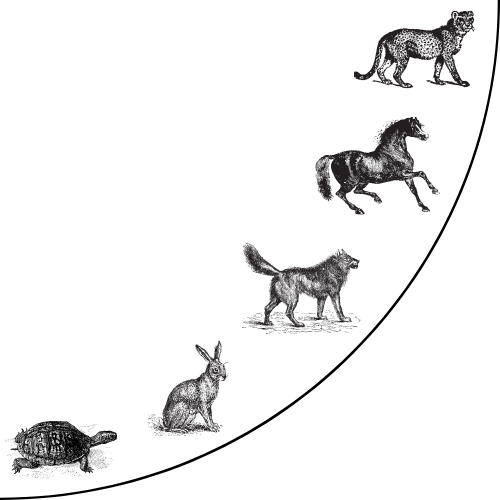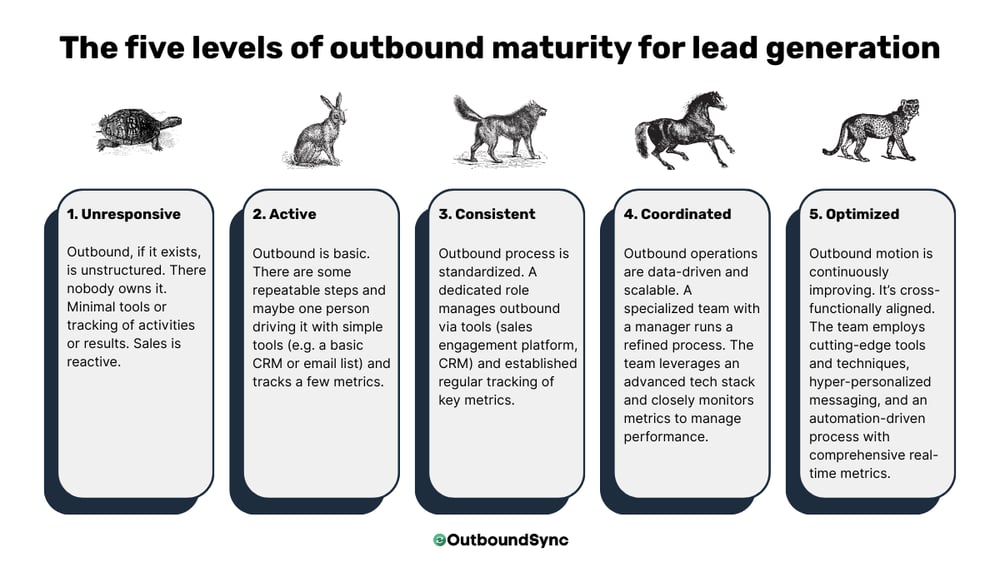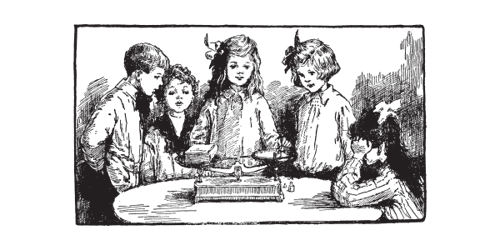Leveling up lead generation: The Outbound Maturity Curve
The Outbound Maturity Curve is a framework that helps lead generation and go to market (GTM) teams evaluate their outbound sales engine. When applied, it provides a clear path to building an elite GTM machine.
Having a mature outbound organization means you can quickly and proactively respond to opportunities in your market.
The Outbound Maturity Curve was created by OutboundSync. It is informed by our work supporting GTM motion of hundreds of teams, including some of the most sophisticated, high growth B2B companies in the world.

Why we created this
The Outbound Maturity Curve is a framework that outlines five levels of maturity. The ultimate goal is lead generation. Specifically, more meetings, more deals and opportunities, and more revenue.
This model aims to help you build a growth engine where processes are defined and repeatable, teams and ownership become more specialized, technology and tooling are implemented and integrated.
With this, data and targeting improve, messaging becomes more personalized, metrics and reporting become robust, the CRM data model is structured, and automation increases.
As an organization moves up the levels, it can expect to see more predictable pipeline generation, higher engagement rates with prospects, and a more effective sales development function.
By providing characteristic benchmarks at each level, the Outbound Maturity Curve helps teams identify where they stand today and what it takes to reach the next stage of maturity.
Watch a walkthrough of the Outbound Maturity Curve

The role of agencies in accelerating outbound maturity
For many organizations, reaching the highest levels of outbound maturity can take years of iteration, hiring, and process refinement.
Bringing in an external agency can accelerate this journey by providing, established playbooks, scalable execution, and expedited revenue.
However just as you are looking for the best agency, they are looking for the best clients. And quality of work is not evenly distributed. The best agencies are much better than the average ones.
This means sound internal strategy, data, and processes are required to maximize any agency’s impact. Without this, companies risk poor coordination, misalignment on messaging, and poor results.
You will find agency considerations in every step of the model below.

“Speed is only useful if you are running in the right direction.”
– Joel Barker

1. Unresponsive
Outbound, if it exists, is unstructured. There nobody owns it. Minimal tools or tracking of activities or results. Sales is reactive.

2. Active
Outbound is basic. There are some repeatable steps and maybe one person driving it with simple tools (e.g. a basic CRM or email list) and tracks a few metrics.

3. Consistent
Outbound process is standardized. A dedicated role manages outbound via tools (sales engagement platform, CRM) and established regular tracking of key metrics.

4. Coordinated
Outbound operations are data-driven and scalable. A specialized team with a manager runs a refined process. The team leverages an advanced tech stack and closely monitors metrics to manage performance.

5. Optimized
Outbound motion is continuously improving. It’s cross-functionally aligned. The team employs cutting-edge tools and techniques, hyper-personalized messaging, and an automation-driven process with comprehensive real-time metrics.
1. Unresponsive
Outbound, if it exists at all, is unstructured, with no formal process. There are no dedicated resources, minimal to no tools or tracking of activities or results. The company can't react to new opportunities. If you had to generate leads this week, it's unclear how you might do that.
Unexperienced direct hires will have basically no resources to work with. An agency could jumpstart outbound efforts, providing immediate prospecting, outreach, and initial pipeline generation but would be working in isolation.
Companies at this stage on the curve are at a high risk of failure for any outbound initiative. By default and for forecasting purposes, it should be assumed that any outbound efforts will fail.

“The world is changing. We all know this. And as that world changes, if you don’t transform your company, you’re stuck.”
— Ursula Burns
People
No dedicated team or owner.
Outbound is done sporadically, if at all, by whoever has time (e.g. founders or a few sales reps); there is no clear accountability or specialization.
Process
Ad hoc and unstructured.
No defined process or playbook for outbound; each person does their own thing, resulting in inconsistent outreach.
Messaging
Generic mass messaging.
Emails/calls are not personalized beyond maybe a name. No templates or inconsistent messaging across individuals. Messaging lacks relevance to the prospect’s industry or pain points.
Data
Undefined targeting.
Little to no clear Ideal Customer Profile (ICP). Leads are taken from ad-hoc sources or personal networks. Data is non-existent or low quality and not enriched; targeting is broad or random.
Metrics
Barely any metrics.
Outreach activities are not systematically tracked. There might be an anecdotal count of calls or emails, but no formal measurement of opens, replies, or conversions. Reporting is virtually non-existent.
Technology
Minimal tooling.
Relying on personal email and phone. No sales engagement platform or sequence tools. No focus on deliverability (emails sent from primary accounts without monitoring) and typically only one channel is used (e.g. cold calling or basic emailing, not both).
CRM
Scattered or no CRM usage.
There may be no CRM in place, or if there is, outbound contacts and activities are not reliably recorded. No structured fields or data model to support outbound (e.g. no categories or statuses for leads).
Automation
No automation or visibility.
All outreach is manual. There are no sequence tools or automated reminders. Since no automation has been created, there is nothing for management to have visibility into from a workflow or controls perspective.
2. Active
Outbound process is basic and emerging. There are some repeatable steps or routines and perhaps one person driving it. The team uses simple tools (e.g. a basic CRM or email list) and tracks a few metrics informally. There's internal acknowledgement that lead generation is a component of hitting revenue goals.

“'Done is better than perfect.' I have tried to embrace this motto and let go of unattainable standards. Aiming for perfection causes frustration at best and paralysis at worst.”
— Sheryl Sandberg
People
Limited ownership.
Perhaps one salesperson or a junior rep is assigned part-time to outbound duties. There is some notion of responsibility, but outbound is not yet a fully distinct role. No formal training; learning is on the fly.
Process
Basic process emerging.
There is an attempt to create a repeatable cadence (e.g. a simple schedule of calls/emails), but it’s not fully documented or enforced. The process is still rudimentary and varies slightly by individual.
Messaging
Templates with light personalization.
The team develops a few basic email templates or call scripts. Personalization is minimal – perhaps just First Name and Company variable inserts in emails. Content is mostly one-size-fits-all, talking generally about the product. There’s little tailoring to specific roles or industries yet.
Data
Initial targeting defined.
The organization has identified basic criteria for prospects (e.g. industry, company size) to focus on an ICP. Lead lists are slightly more curated (perhaps purchased lists or scraped data with some filtering). Segmentation is broad (e.g. one generic list for all prospects). Data quality is still inconsistent, with some outdated or incomplete information.
Metrics
Tracking of basic metrics.
The team tracks very simple metrics, often manually – e.g. number of emails sent, calls made, and maybe responses or meetings booked. Reporting is ad hoc, possibly via spreadsheets or a basic CRM report. There is no deep analysis; metrics are used just to get a rough sense of activity.
Technology
Introductory tools.
The team begins using a CRM like HubSpot or Salesforce to store contacts and maybe a simple email tool or mail merge for campaigns. Outreach still largely single-channel (for example, primarily email blasts or calls). Deliverability awareness is minimal – bounces or spam issues might be noticed but not proactively managed. Little use of alternative channels (maybe an occasional LinkedIn message, but not in a structured way).
CRM
Basic CRM usage.
Contacts and Accounts/Companies are entered into a CRM with fundamental details (name, company domain, email). There might be a simple status field (e.g. “Contacted” or “Interested”), but no robust data model. Data entry is inconsistent as habits are still forming. Some activities (e.g. emails, calls) may be logged in CRM, but others are missed.
Automation
Some automation & limited visibility.
There is rudimentary automation, such as sending a small batch of emails using a CRM’s sequence feature or scheduling emails to send later. Most follow-ups are still manual reminders and using whatever single channel was used for the initial outreach. May include one-off automation from point solution tools.
3. Consistent
Outbound process is standardized and documented. A dedicated role or small team manages outbound efforts. The organization has implemented core tools (sales engagement software, CRM integration) and established regular tracking of key metrics.

“It is impossible to improve any process until it is standardized. If the process is shifting from here to there, then any improvement will just be one more variation that is occasionally used and mostly ignored.”
— Masaaki Imai
People
Dedicated role/team.
The company has a dedicated agency or SDR/BDR (or a small team of them) focused on outbound. There is clear ownership of outbound results, possibly with a manager or senior rep overseeing the function. Training or onboarding for outbound techniques begins to formalize.
Process
Documented and standardized.
A clear outbound playbook or cadence is in place (e.g. “3 emails and 2 calls over 2 weeks”). The process is documented and shared with the team. Reps follow a consistent outreach schedule, improving overall consistency. Regular reviews ensure the process is being used. A formal hand-off process exists.
Messaging
Segmented messaging & moderate personalization.
Outreach content is now tailored to segments or personas. There are templates specific to, say, VP of Finance vs. IT Manager, or different scripts for different industries. Each template includes moderate personalization – e.g. referencing a common pain point for that segment or a recent industry trend. Reps might add one custom sentence for each prospect to increase relevance. The team experiments with A/B testing subject lines or email copy to see what resonates better.
Data
Targeting by ICP & segments.
The ideal customer profile is well-defined and used to guide list building. Prospect lists are segmented by key attributes (e.g. separate lists for different industries or roles). The team uses better data sources (like LinkedIn Sales Navigator, list providers, or data enrichment tools) to gather leads that fit the ICP. Data quality improves – records have more complete information (industry, title, etc.), and there’s an effort to keep data up-to-date.
Metrics
Regular KPI tracking.
A set of key performance indicators (KPIs) for outbound is defined – e.g. daily/weekly activities per rep, email open rates, reply rates, number of meetings or qualified opportunities from outbound. Dashboards or reports are set up (in the CRM or the engagement tool) so the team and management can review these metrics on a regular basis (e.g. weekly sales meeting). There is visibility into which sequences or cadences perform best.
Technology
Sales engagement tools adopted.
The organization implements a sales engagement platform (e.g. Smartlead, Instantly, EmailBison, or similar) to automate sequences and track engagement. This tool is integrated with the CRM for followup so that emails and calls log automatically. Deliverability measures start – e.g., warming up a new email domain or monitoring bounce rates. The team also begins to use multiple channels in a structured way: for example, an outbound cadence might include both email and phone steps, and perhaps a LinkedIn touch for certain prospects. A scheduling tool is being used and anyone involved in outbound has reliable videoconferencing access and a dedicated phone number to call prospects directly.
CRM
Aligned CRM data model.
The CRM now supports the outbound process more explicitly. For example, there are lifecycle stage or lead statuses or stages (e.g. “New”, “Working”, “Connected”, “Qualified”) to track progress. Custom fields might exist for segmentation (like Industry, Persona, Outreach Sequence ID, etc.). Data entry and logging are much more consistent because you are automatically logging activities. The CRM can now be used to run reports on outbound activities and results (e.g. leads by status or by sequence).
Automation
Automation and visibility improving.
Outreach sequences automate most email sends and prompt reps when it’s time to make calls or send LinkedIn messages. Some workflow automations are in place – for example, when a lead replies positively, they are automatically marked in CRM and assigned to an AE, or if a lead completes a sequence with no response, the system updates a status and perhaps schedules a later nurture touch. Management has good visibility into outbound and adjacent automation from other low-code tools, they can see activity logs in CRM.
4. Coordinated
Outbound operations are data-driven and scalable. A specialized team with a manager runs a refined process. The team leverages an advanced tech stack (automation, multi-channel outreach, deliverability management) and closely monitors metrics to manage performance.
Excellent agencies can bring your organization up to level four during their onboarding process. They will have existing tools and process to improve messaging, data, metrics, and technology especially.
Most critical is that at this stage you have diagnostic capabilities to understand not only what is working, but also when things are breaking. Companies in this stage have a serious issue when their outbound engine is stalling—and if you can't fix it or even troubleshoot the problem, then you have two problems and not one.

“What gets measured gets managed.”
— Peter Drucker
People
Specialized team with leadership.
The organization now has an established outbound team (SDRs/BDRs/agency) with a dedicated manager overseeing their work. Roles are well-defined – SDRs/BDRs/agency focus on prospecting/qualifying, Account Executives focus on closing. There might also be support roles or a sales enablement function assisting with content and training. Outbound is seen as a key function with goals aligned to pipeline generation, and leadership actively manages and supports it.
Process
Refined, scalable process.
The outbound process is not only standardized but continuously refined based on results. And you have multiple reports to understand if things are breaking.The team uses feedback and data to adjust the cadence (e.g. optimizing the number of touches or timing between touches). The process is scalable and documented such that new team members can easily be onboarded. Regular training and coaching ensure the process is executed effectively by everyone.
Messaging
Highly personalized and targeted messaging.
The content of outreach is now deeply personalized and relevant to each segment. Reps (or automated tools) incorporate personalization beyond surface-level – e.g. referencing a prospect’s specific business challenge, recent news about their company, or role-specific value propositions. Templates exist for scale, but they have flexible placeholders for personalization tokens or snippets. The team might use personalization at scale techniques, like mail merges that insert custom sentences relevant to each prospect. There is ongoing experimentation with messaging – A/B testing different approaches, trying new sequences (e.g. sequences tailored to different verticals or triggers). Quick wins are shared quickly. Successful messaging playbooks are shared and standardized across the team.
Data
Advanced targeting & data management.
Targeting becomes highly strategic. The team prioritizes prospects using advanced data points – e.g. intent data (signals that a company might be looking for a solution), engagement scores, or predictive lead scoring. Accounts might be tiered (Tier 1: high-value strategic accounts with very personalized outreach, Tier 2: standard outreach, etc.). Multiple providers are orchestrated through a waterfall tool like Clay. Data is validated at least once—i.e. your data vendors don't operate with impunity. Core CRM data is regularly cleaned and enriched; the company might have an agency, data provider, or an ops person ensuring new contacts are up-to-date and duplicate records are managed. There is tight coordination with marketing on target accounts and audiences (possibly an Account-Based Marketing approach for top tiers).
Metrics
Comprehensive metrics & optimization.
Outbound performance is managed by data. The team tracks metrics at each funnel stage with a focus on post-reply conversion (think: delivery rates, positive response rates, connection rates, meetings attended, opportunities created, and ultimately revenue from outbound. These metrics are in dashboards that update in real-time. The manager and team review them frequently to coach reps (e.g. low conversion in a certain sequence prompts a review of that message or list). Goals and benchmarks are set for each metric (e.g. “We aim for 5% positive reply rate on campaigns”). There’s a culture of using data to optimize – if some approach yields better results, the team quickly adapts the process.
Technology
Advanced tech stack & proactive deliverability.
A full sales tech stack is in place. In addition to the sales engagement platform and CRM, the team might use power dialers for calling, deliverability tools (for example, email warming services, spam testing, multiple sending domains/IPs), and sales intelligence tools. All tools are integrated (CRM, sequencing, dialer, data providers), providing a seamless workflow. Multi-channel outreach is the norm – sequences include emails, calls, LinkedIn, and maybe other channels (e.g. SMS, WhatsApp, or direct mail for high-value accounts) in a coordinated way. Deliverability is actively managed: the team monitors sender reputation, keeps an eye on inbox placement, and uses dedicated domains or subdomains for cold outreach to protect the main domain. A scheduling tool deeply integrates data back to the CRM for seamless reporting on meeting statuses.
CRM
Sophisticated CRM data model.
The CRM is finely tuned to support all this complexity. There are fields capturing detailed info (lead source, sequence name, last activity date, etc.). Integration is key: the CRM, marketing automation, and sales engagement platform share data (e.g. if marketing finds a new lead, it’s flagged for SDRs; if SDRs discover an opportunity, it’s tracked back to the campaign). Outbound activities are clearly linked to Companies/Accounts in CRM for attribution on the Opportunity/Deal object. Data hygiene rules are enforced (e.g. no duplicate leads, standardized picklist values for industries). The CRM can segment and generate accurate lists for follow-up campaigns easily due to the robust data model. The CRM connection is safe, secure, and auditable.
Automation
Extensive automation & full visibility.
The outbound process leverages automation at every viable step: sequences with conditional logic (if prospect clicks link, then do X; if no response on Y channel, do Z), automatic task creation and reminders for reps, and even automated data updates (for example, if a prospect replies “not the right person,” a workflow could tag that and create a task to find a new contact). This automation can be audited inside of the CRM and most automation can be managed within the CRM, rather than a constellation of separate automation tools with a myriad of different owners, access controls, etc.
5. Optimized
The outbound function is fully optimized and continually improving. It’s a strategic, world-class operation with cross-functional alignment. The team employs cutting-edge tools and techniques, hyper-personalized messaging, and an automation-driven process with comprehensive real-time metrics. You are accomplishing the North Star goal of generating leads for your organization.
For companies at this stage, agencies are supported by a deep internal team. Their function is that of explorer—testing new tools, messaging, and markets. They rapidly test and iterate, so that learnings can be deployed at scale across the internal GTM function.
The biggest challenge for companies is a serious one: Maintaining your culture of innovation. Once fast-growing companies are now stagnant. Don't let it to be you. This includes your tech stack, data providers, messaging, and more. Most importantly, it's your people. Offer paths for growth, invest in coaching and enablement, and be sure to upskill new hires.

“Success is not a destination; it’s a continuous journey.”
— Aliko Dangote
People
Strategic, world-class team.
Outbound is now a strategic function treated on par with other revenue operations. The team may have grown and even specialized further (for instance, separate teams for different regions or industries, or an Outbound Leadership Council under marketing, sales/business development, or lead generation that develops best practices for the global team). Leadership of the outbound team is experienced and involved in high-level planning. There is strong alignment and collaboration with Marketing, Product, and other departments to ensure messaging and targeting are spot-on.
Process
Continuous improvement & innovation.
Outbound process at this level is a well-oiled machine that the organization continually tunes. There is a culture of experimentation – A/B testing is routine, and the team frequently pilots new techniques or channels (for example, trying out video messaging or other emerging tactics). The process is agile: when data or feedback indicates a needed change, the team adapts quickly. The outbound team’s knowledge (e.g. feedback from the field on what messaging works, or which objections are common) is fed back into the organization’s strategy. Outbound is orchestrated alongside channels clearly outside of the sales department, like paid advertising.
Messaging
Hyper-personalized, value-driven messaging.
Messaging at Level 5 is exceptionally personalized and impactful. The team uses insights from research and data to tailor every touch. Communications focus deeply on the prospect’s specific business needs and value proposition. At this scale, the organization likely uses AI to help craft these personalized messages, ensuring they can do it at volume without sacrificing quality. There’s a library of rich content (case studies, videos, whitepapers) that reps pull from to make each outreach highly relevant. New content formats (personalized video messages, interactive assets) are employed for engagement—either in campaigns or during follow-up. The messaging strategy is frequently updated based on what the data shows resonates most with prospects.
Data
Data-driven precision targeting.
Data is a strategic asset at this stage. The organization uses every available data point to hone its targeting – intent data, engagement data, product usage data (if applicable), etc. Prospects are prioritized by predictive models that indicate who is most likely to convert. The ICP is continuously refined as market conditions change. Data quality is extremely high due to automation: new data is validated and enriched in real-time. Individual data vendors are held accountable and tracked for not only accuracy but also cost, and are being benchmarked on a regular basis. Variables like propensity to respond (i.e. for cold calls) are leveraged for maximum impact. The team might even employ AI to dynamically identify lookalike prospects and/or suggest the next best accounts to pursue.
Metrics
Comprehensive metrics & optimization.
Outbound performance is managed by data. The team tracks metrics at each funnel stage with a focus on post-reply conversion (think: delivery rates, positive response rates, connection rates, meetings attended, opportunities created, and ultimately revenue from outbound. These metrics are in dashboards that update in real-time. The manager and team review them frequently to coach reps (e.g. low conversion in a certain sequence prompts a review of that message or list). Goals and benchmarks are set for each metric (e.g. “We aim for 5% positive reply rate on campaigns”). There’s a culture of using data to optimize – if some approach yields better results, the team quickly adapts the process.
Technology
Advanced tech stack & proactive deliverability.
A full sales tech stack is in place. In addition to the sales engagement platform and CRM, the team might use power dialers for calling, deliverability tools (for example, email warming services, spam testing, multiple sending domains/IPs), and sales intelligence tools. All tools are integrated (CRM, sequencing, dialer, data providers), providing a seamless workflow. Multi-channel outreach is the norm – sequences include emails, calls, LinkedIn, and maybe other channels (e.g. SMS, WhatsApp, or direct mail for high-value accounts) in a coordinated way. Ability to connect is actively managed. Beyond email sender reputation, etc. this also includes account connectivity for other channels like LinkedIn and WhatsApp.
CRM
Sophisticated CRM data model.
The CRM is finely tuned to support all this complexity. There are fields capturing detailed info (lead source, sequence name, last activity date, etc.). Integration is key: the CRM, marketing automation, and sales engagement platform share data (e.g. if marketing finds a new lead, it’s flagged for SDRs; if SDRs discover an opportunity, it’s tracked back to the campaign). Outbound activities are clearly linked to Companies/Accounts in CRM for attribution on the Opportunity/Deal object. Data hygiene rules are enforced (e.g. no duplicate leads, standardized picklist values for industries). The CRM can segment and generate accurate lists for follow-up campaigns easily due to the robust data model. The CRM connection is safe, secure, and auditable.
Automation
Extensive automation & full visibility.
The outbound process leverages automation at every viable step: sequences with conditional logic (if prospect clicks link, then do X; if no response on Y channel, do Z), automatic task creation and reminders for reps, and even automated data updates (for example, if a prospect replies “not the right person,” a workflow could tag that and create a task to find a new contact). This automation can be audited inside of the CRM and most automation can be managed within the CRM, rather than a constellation of separate automation tools with a myriad of different owners, access controls, etc.
Moving up the curve
A key takeaway is that outbound maturity is multifaceted – it’s not just about having the right tools or more people, but about improving process, team structure, data, messaging, and measurement in tandem to drive lead generation. Here's how:
- Diagnose your current level by looking at the characteristics in the model – identify which level most closely describes your outbound operations today.
- Pinpoint the gaps that are preventing you from reaching the next level. For instance, you might find that while your team is using basic templates and a CRM (Level 2), you lack a standardized process and dedicated role (signs you haven’t reached Level 3).
- Develop a roadmap to improve, this could include investing in new tools or better integrating existing ones, providing training to your team, defining clear processes and KPIs, cleaning up and enriching your data, or implementing more personalization in messaging.
Tackle these improvements iteratively, focusing on one level at a time. And consider leveraging an agency to move faster. Gradual progress ensures the foundations are solid.

“It is not the strongest of the species that survive, nor the most intelligent, but the one most responsive to change.”
— Charles Darwin
Where we go from here
In summary, the Outbound Maturity Curve is both a diagnostic tool and a guide for continuous improvement. By regularly evaluating where you stand and taking deliberate actions to mature your outbound sales approach, your organization can advance to higher levels of performance.
Over time, climbing the maturity curve means outbound sales becomes a significant, reliable driver of growth, characterized by efficient processes, empowered teams, smart use of technology, quality data, compelling messaging, and a metrics-driven culture.
Organizations at the top of the maturity curve not only achieve better immediate results but are also more adaptable to the changing sales environment, ensuring long-term success for their sales efforts.

“The only way to do great work is to love what you do and continuously improve how you do it.”
— Steve Jobs
